Evolutionary Ecology
The department of Evolutionary Ecology gathers complementary skills in behavioural ecology, population dynamics, population biology, community ecology, and methodology (statistics and modelling). The research done in the department aims at studying how animal species evolve in a changing world by understanding the causes of the evolution of traits, adaptations and interactions. For that, we consider different levels of organization from individuals to populations and communities. Because organisms cannot be considered isolated from other biotic factors, we consider pathogens but also competing species within communities.
We study how individuals adapt to their environments that are largely impacted by anthropic pressures, and how life history traits and behaviour evolve in response to these pressures. Although we mainly focus on phenotype, we more and more consider the mechanistic link between the genotype and the phenotype. We develop the theoretical framework of our discipline through a conceptual and modeling approach. In parallel, we test hypotheses that arise from theoretical predictions through experimental, comparative and observational approaches on different biological models (insects, birds, mammals). Experimental approaches are developed in the laboratory (insect model) and in natura (bird, insect and mammal models). Observational and comparative research is mainly concerned with vertebrates. Our approaches are also, and increasingly, interested in the mechanisms of adaptive responses. In addition to the classical approaches of demographic analysis and trait change, methods of ecophysiology, chemical ecology and molecular biology are used.
Our department hosts several long-term studies of wild populations of different species. These long-term studies offer a valuable way to understand how biotic and abiotic factors affect individuals’ life history traits, and the functioning of populations in natura. Five populations of mammalian species are thus monitored for several years (more than 40 years on roe deer, 30 on Alpine marmots, 25 years on cats, 16 years on zebras, and 20 years on impala). Two of our study sites (La Sassière in Vanoise National Park (Alpine marmots) and Hwange National Park) have been certified as “Site d’Etude en Ecologie Globale” (SEEG), and two (ZA “Hwange” and ZA “Antarctic and sub-Antarctic”) were certified as “Zone Atelier” by the CNRS.
The department of Evolutionary ecology is also largely involved in training activities. Lastly, we also have strong socio-economic relationships. Indeed, because we address questions of major societal interest (global warming, public health) we tightly collaborate with socio-economic partners (Office Français de la Biodiversité, Vanoise National Park, Hwange National Park in Zimbabwe, Office National des Forêts, etc.) and participate to general public and media events.
Publications
Display of 1891 to 1920 publications on 2449 in total
Testing the species traits-environment relationships : the fourth-corner problem revisited
Ecology . 89 : 3400-3412
Journal article
see the publicationThe genetic similarity between pair members influences the frequency of extrapair paternity in alpine marmots
Animal Behaviour . 76 : 87-95
Journal article
see the publicationVertebrate Ageing: An Evolutionary Process with a Genetic Basis?
Current Biology . 18 : R130-R131
Journal article
see the publicationSpatial distribution of soil contamination by Toxoplasma gondii in relation to cat defecation behaviour in an urban area.
International Journal for Parasitology . 38 ( 8-9 ) : 1017-23
Journal article
see the publicationToxoplasmosis in corsican wild boar : a first epidemiological study
10. European Multicolloquium of Parasitology . : 1 p.
Poster
see the publicationAntibodies against Salmonella is associated with reduced reproductive success in female alpine chamois (Rupicapra rupicapra)
Canadian Journal of Zoology . 86 ( 10 ) : 1111-1120
DOI: 10.1139/Z08-089
Journal article
see the publicationHeterozygosity and parasite intensity: lung parasites in the water frog hybridization complex
Parasitology . 135 ( 1 ) : 95-104
Journal article
see the publicationHome range of the European rabbit (Oryctolagus cuniculus) in three contrasting French populations
Mammalian Biology: Zeitschrift für Säugetierkunde . 73 : 128-137
Journal article
see the publicationMicrobial-biogeography of France by the use of molecular tools applied to the French soil quality monitoring network (RMQS)
Eurosoil 2008 Book of Abstracts . : 59-60
Conference paper
see the publicationBacterial taxa associated with the hematophagous mite Dermanyssus gallinae detected by 16S rRNA PCR amplification and TTGE fingerprinting
Research in Microbiology . 160 ( 1 ) : 63-70
Journal article
see the publicationDisentangling allometry and response to Kellwasser anoxic events in the Late Devonian conodont genus Ancyrodella
Lethaia . 41 ( 4 ) : 383-394
Journal article
see the publicationThe record of climate-driven morphological changes in 376 Ma old Devonian fossils.
Geology . 36 : 907-910
Journal article
see the publicationA bayesian approach to analyse ecotoxicological data
Environmental Science and Technology . 42 ( 23 ) : 8978-8984
DOI: 10.1021/es801418x
Journal article
see the publicationEstimating parameters of neutral communities: from one single large to several small samples
Ecology . 88 ( 10 ) : 2482–2488
DOI: 10.1890/07-0049.1
Journal article
see the publicationLes conceptions d'enseignants du primaire et du secondaire sur le déterminisme biologique de la personnalité humaine dans 12 pays d’Europe, d'Afrique et du Moyen Orient.
Congrès international AREF 2007 (Actualité de la Recherche en Education et en Formation) .
Conference paper
see the publicationDynamic energy budget as a basis to model population-level effects of zinc-spiked sediments in the gastropod valvata piscinalis
Environmental Toxicology and Chemistry . 26 ( 8 ) : 1774-1783
Journal article
see the publicationIntegrating the lethal and sublethal effects of toxic compounds into the population dynamics of Daphnia magna: A combination of the DEBtox and matrix population models
Ecological Modelling . 203 ( 3-4 ) : 204-214
Journal article
see the publicationStochasticity and spatial heterogeneity in population dynamics: implications for ecotoxicological risk assessment
SETAC Europe 17th Annual Meeting, Porto, Portugal, PRT, 20-24 May 2007 . : 1
Conference paper
see the publicationUnexpected heterozygosity in an island mouflon population founded by a single pair of individuals.
Proceedings of the Royal Society B: Biological Sciences . 274 : 527-533
Journal article
see the publicationPredicting the emergence of human hantavirus disease using a combination of viral dynamics and rodent demographic patterns
Epidemiology and Infection . 135 : 46--56
Journal article
see the publicationThe effects of cyclic dynamics and mating system on the effective size of an island mouflon population
Molecular Ecology . 16 : 4482-4492
Journal article
see the publicationThe Near Eastern Origin of Cat Domestication
Science . 317 : 519-523
Journal article
see the publicationDetecting population structure using STRUCTURE software: effect of background linkage disequilibrium
Heredity . 99 : 374-380
Journal article
see the publicationFeeding-order in an urban feral domestic cat colony: relationship to dominance rank sex and age
Animal Behaviour . 74 : 1369-1379
Journal article
see the publicationA descriptive spatial analysis of bovine tuberculosis in intensively controlled cattle farms in New Zealand
Veterinary Research . 38 ( 3 ) : 465-479
Journal article
see the publicationMandibles and molars of the wood mouse, Apodemus sylvaticus (L.): integrated latitudinal pattern and mosaic insular evolution
Journal of Biogeography . 34 : 335-355
Journal article
see the publicationLe projet ECOMIC-RMQS ou comment faire de la microbiogéographie à l'échelle de la France
Journées d'animations scientifiques des ORE ACBB . : n.p.
Conference paper
see the publicationArbuscular mycorrhizas and ectomycorrhizas of Uapaca bojeri L. (Euphorbiaceae): sporophore diversity patterns of root colonization and effects on seedling growth and soil microbial catabolic diversity
Mycorrhiza . 17 : 195-208
Journal article
see the publicationSoil functional diversity and P solubilization from rock phosphate after inoculation whith native or allochtonous arbuscular mycorrhizal fungi
Forest Ecology and Management . 241 ( 1-3 ) : 200-208
Journal article
see the publicationEvolution and invasion dynamics of multiple infections with Wolbachia investigated using matrix based models.
Journal of Theoretical Biology . 245 : 197-209
Journal article
see the publication
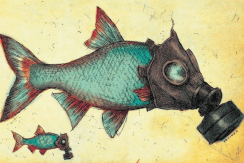
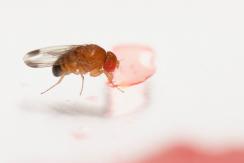
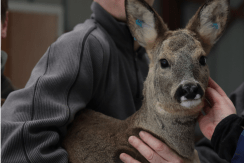
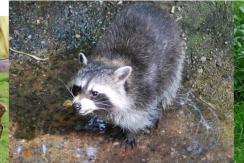
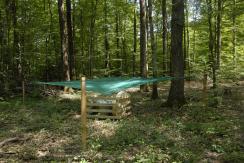
You also, comment on this article